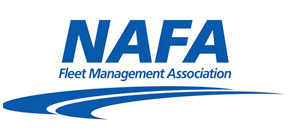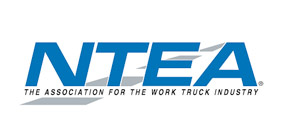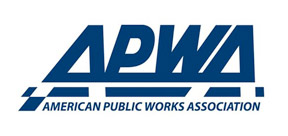Smarter storm response: Moving winter operations from reactive to proactive with technology that pays for itself

When winter weather rolls in, cities and counties across North America brace for logistical challenges that can stretch resources and budgets to their limits. But for a growing number of cities, counties and states, Frost Solutions’ Mini-Weather Station is changing the way public works departments handle storms. Compact, affordable and intelligent, these innovative pole-mounted units are delivering real-time data, visuals and industry-leading forecasts that help crews respond faster, safer and at the right times.
Precision that pays: A budget-saving solution
For public agencies, every decision made during a storm event has a cost. Overtreating roads with salt and chemicals or sending out patrols too early can drain limited budgets. Conversely, waiting too long risks public safety and adds to post-storm cleanup costs. That’s where the Frost Mini-Weather Station shines.
Mounted on existing streetlights or utility poles, these solar-powered stations roll together hyperlocal data updated every minute, location specific atmospheric conditions and pavement forecasts, photo assessment using AI, alerts and unmatched reliability to provide an easy-to-use tool to give winter operations leaders the information they need. That precision translates directly into better timing for material application and crew deployment.
“Most cities see a return on investment after just a few snow events,” said Mike Bott, owner of Frost Solutions. “It’s a visible tool that not only saves money, but also shows the community that their local government is being efficient and proactive.”
And the numbers speak for themselves. One Department of Defense customer noted, “We have been using the Frost Mini Weather Station for three snow seasons, and it has been a game changer for us. These systems allow us to monitor weather and pavement conditions remotely, enabling us to deploy teams just in time. As a result, we have reduced our costs by approximately 39%.”
From large counties to small towns, the savings add up quickly. “Winter operations cost the county around $20,000 an hour,” shared Dale, a highway supervisor in Wisconsin. “Being able to strategically deploy resources with the help of Frost units has led to significant savings.”
Enhancing safety with smarter tools

Reliable and timely data isn’t just about saving dollars — it’s about keeping people safe. In rapidly changing weather, having access to current conditions at multiple points across a city or region can mean the difference between timely intervention and missed opportunities.
The Frost Mini-Weather Stations are built for these challenges. With visual feeds and AI-driven condition alerts, supervisors can assess road safety without sending teams out into hazardous conditions.
“Having Frost sensors deployed in multiple foothills locations in Colorado has allowed for quicker decision-making during critical weather events in some remote locations,” said Mike Chapman of the Colorado Department of Transportation. “This has improved both the safety of our personnel and efficiency of our operations along those rural highways.”
The stations come equipped with an AI system trained on thousands of road images. It can now detect conditions like snow, slush or ice in real time — triggering alerts automatically, without the need for constant human oversight.
“Our AI can recognize conditions and send notifications without human input,” said Bott. “It allows supervisors to stay focused until an action is really needed.”
This shift from reactive to proactive response also helps prevent accidents. Knowing precisely when roads start to ice or when visibility begins to drop gives municipalities a critical edge in maintaining safe travel conditions for the public and for their own crews.
A greener way to fight snow
Beyond budgets and safety, there’s a growing concern about the environmental toll of winter operations — especially the heavy use of road salt. According to Wisconsin Salt Wise, just one teaspoon of salt is enough to permanently pollute five gallons of water. With most municipalities applying salt by the ton, the risk to local water sources and ecosystems is substantial.
Frost Solutions’ technology helps agencies dial in the most effective, environmentally responsible application rates. By closely monitoring pavement temperature and road surface condition, crews can apply just enough material to keep roads safe — without overdoing it.
“Between stepping up our salt brine program and using the Frost Solutions cameras, we’ve been able to cut salt usage by nearly 20% — about 10 tons less per route,” said Jacob Dodge, Deputy Director of Public Works in Bath, Maine. “Checking road temperatures and leveraging live visuals from the cameras has made a big difference in how we manage storms and direct crews.”
This kind of targeted approach not only prevents salt runoff into local waterways but also reduces wear on roads, bridges and vehicles. That’s a win for sustainability and long-term infrastructure health.
From the snow-belt to the sun-belt
Not in a snow-belt state? Throughout the southeast, Mini-Weather Stations provide early forecasts about when a bridge or road is going to ice over and should be closed. Without the trucks, plows and salters typical of states with regular snowstorms, public works leaders in sun-belt states have turned to these cost effective tools to keep their residents safe.
“Frost Solutions allows our operations dollars to go farther and capture more data than the traditional model of owning full-scale Road Weather Information Systems,” said Brett Sellers of the Alabama Department of Transportation. “The alert features are beneficial in freeing up our focus until our thresholds are met, and the ability to ingest the data into other operations platforms helps to get the data in the hands of users across multiple platforms.”
That interoperability is key for agencies that use other management software. Frost’s platform is designed to integrate easily into existing systems, putting critical weather and pavement data exactly where it’s needed — when it’s needed.
Ready for Whatever Winter Brings
Winter storms will always be a fact of life. But with Frost Solutions’ Mini-Weather Station, municipalities now have a tool that brings clarity, speed, and intelligence to every decision. Whether it’s saving on salt, protecting waterways, reducing labor costs or preventing accidents, these compact units are proving that big results can come from small packages.
To learn more about how Frost Solutions is helping municipalities weather the winter more wisely, visit frostsolutions.io.
Next Article: Unity Square Park: Leading a citywide movement of revitalization in New Jersey


